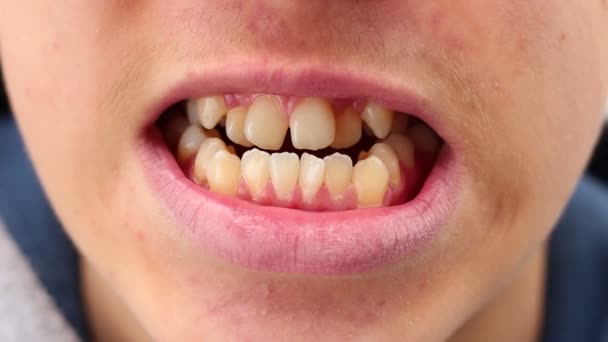The crooked teeth or malocclusion, is a dental disorder that affects approximately 65% of the population. Perhaps the greatest concern is that not so aesthetic aspect of our smile, but as we will see in this article this problem has many physical and social repercussions, as well as solutions that are within our reach with an orthodontic treatment that does not have to be so expensive.
What is a malocclusion?
The malocclusion is an alteration of the dental alignment caused by various factors. When there is a good occlusion the teeth are straight, fit or there is a correct gear and relationship with the opposing teeth, as well as a correct relationship of the jaws. The structures surrounding the teeth are in harmony and fulfill their function: Biting, chewing, talking, good looks, etc. The main factors of malocclusion are hereditary, by habits etc, explains dentist in saraswati vihar.
Why do crooked teeth come out?
The malocclusions are due to several factors, many of which are still under investigation, but there is a large genetic component, that is, if their parents have crooked teeth, it is likely that the children also present this problem; Similarly, habits such as mouth breathing or digital suction are also influential. One of the biggest causes is tooth decay, since premature tooth loss causes a great alteration in the development of occlusion. We recommend the visit to the orthodontist in Pitampura from 4 years, age where you can identify some factors that cause these problems.
How are they treated?
Modern dentistry today offers many alternatives to solve these problems of dental malposition. Evaluation is essential at dental clinic in Saraswati Vihar to determine what type of procedure is best for us. The first and best alternative is always orthodontics, it is also possible to solve these problems using dental veneers.
What is orthodontics?
Orthodontics is an important specialty of dentistry that is responsible for studying the correction of teeth and their bad occlusion. Orthodontic treatments have the advantage of accommodating and aligning your teeth, giving you at the end of the treatment, a beautiful smile. The time of orthodontic treatment will depend on the case presented by each patient. The average time fluctuates between 12 to 18 months and in cases with dental extractions it can take 24 to 30 months. There are some cases of malocclusion (excessive protrusion of the maxilla and jaw) that will not only require orthodontic treatment but will also require surgical treatment, since the problem is not only dental but also basal or bone structures, explains dentist in Rani Bagh.
What type of attachments is used?
For orthodontic treatment we use:
- Metal brackets.- These types of brackets are the most economical and the most used. These metal brackets are not very aesthetic, but they are very effective. The cost of this type of device is many times up to 3 times less than other more imperceptible systems.
- Aesthetic brackets.- They are used for any type of age, but most adults use it since they are not visible to the naked eye. They have the same function as metal brackets, but unlike these, these brackets give security to the person and do not feel so ashamed to use brackets.
- Lingual braces.- This type of invisible orthodontics is preferred by adults, since they are not noticed and the treatment is very discreet. The treatment time and results are the same as other orthodontic systems.
- Invisalign or Clear aligner.- These are sequential splints that are used to move teeth like braces. They have some limitations and are higher in cost than conventional brace treatment.
How is orthodontic treatment?
Resolving a malocclusion or correcting crooked teeth is easy if we have the will to do so.
- The first thing one should do is ask a friend or family member for a reference about a good dentist in Delhi.
- If we do not find this type of reference we can inquire on the web and request an evaluation consultation that in most cases are free of charge or with reasonable consultation prices.
- In the first appointment with best dentist in Delhi it will be evaluated in a simple way and you will be given prior information about your particular case. In the same way you will be asked for some auxiliary exams such as x-rays, mouth molds and maybe a CT scan.
- Once the diagnosis is made, the device is installed (brackets and accessories). For more information you can follow this link: orthodontic treatment steps.
Are extractions necessary?
Dental extractions are not indicated in all cases and the decision depends on the evaluation and the thorough analysis of the auxiliary examinations (photographs, radiographs, mouth molds, etc.) at dental clinic in Rani Bagh. Basically, extractions are performed in cases of malocclusion when the teeth are too crowded (crooked teeth) or there is marked protrusion (what we commonly call "trompudo"). The dental pieces that are extracted are the first or second premolars.
Extractions of wisdom teeth will be indicated by the Orthodontist according to their clinical criteria. In many cases these pieces are removed by an oral surgeon in Pitampura, especially the lower third molars, to guarantee the stability of the treatment and avoid other complications.
Consequences of malocclusion:
- It makes dental hygiene difficult and causes tooth decay.
- It can severely alter phonetics or speech.
- It does not allow a good chewing of food, causing gastric disorders.
- The malocclusion untreated periodontal disease more can cause tooth loss.
- It causes social problems, many people are shy or introverted for this reason.
- It causes joint problems (tic joint).
